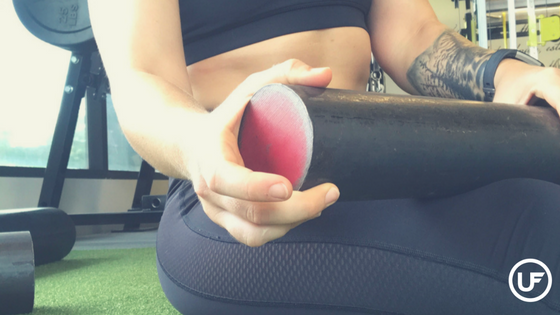

How to Recover After a Workout
posted on August 21, 2017

Here at Union Fitness, we like to stress that it’s not just what you do in the gym that counts. Those other 23 hours a day are pretty important too. That’s why today’s post is going to focus on workout recovery: a few things you can do to rehab your tired muscles after a hard workout and prepare yourself for your next training session as quickly as possible. As usual, I’d like to focus on the basics of recovery before moving on to more advanced methods. If you’re only sleeping 3 hours per night, a cupping session isn’t going to make up for it! So let’s start at the beginning:
1. SLEEP
The number one thing you need to do to recover from a hard workout is sleep! You should be aiming for at least 7-8 hours quality hours per night to reap the best effects. That focus on quality is key: it is during REM sleep that the circulation growth hormone production increases, which helps repair our muscles from the breakdown experience during a training session. Adequate sleep also increases mental alertness, which gives you the motivation you need to kill it at work, at home, and in the gym. Sleep is priceless and the very first thing we encourage people to work on. Do you find yourself choosing between that early AM workout and getting more than 5 hours of sleep? Choose sleep every time. In the future, you can work on getting to bed earlier to fit that workout in too, but sleep comes first.
2. Eat enough nutritious food
You can give it your all in the gym 5 times a week, but if you’re eating poorly, your progress will likely be slower than expected. Much of this is common sense. If your diet consists primarily of fast food and processed sugar, it’s time to make the switch. If you’re eating super healthy but only 1000 calories per day, you’re undercutting your ability to get stronger every day. The amount of food needed to support your training depends on several factors (height, weight, gender, age, type of training, etc) and we are here to help you figure that out. Focus on consistently eating well first, quality of food second, then the calorie math. The key: lots of nutrient dense foods that sit well with you will help you perform better.
3. Restore some mobility
Strength training and heavy cardio routines like distance running rely on tight muscles to produce the needed amount of force to overcome a weight or propel you forward. This is a good thing, to a point. If you’re noticing your mobility is becoming inhibited by your training (or your daily life), it’s time to focus on some stretching and mobility. We offer Slow Flow Recovery yoga just for this reason! The key to stretching is to do it regularly, so aim to get to class every Wednesday at 6pm and throw in some of the poses you learn there a few times a week for the best results.
4. Active Recovery, aka light cardio
At this point hopefully you’ve bought into the idea that rest is very much important to improved performance. That does not mean that you should be spending entire days fixed to the couch binging on Netflix! The next step in your recovery process is some light activity: think walking around outside enjoying the sunshine, trying a new trail in the park, maybe even some relaxed kayaking or climbing! I encourage everyone to try to get outside for cardio while the weather is nice, but a light treadmill or bike workout are just as useful. Getting your muscles moving will help deal with any soreness you have and keep your blood flowing.
5. Massage and myofascial release
Finally we have some more hands-on methods (pun totally intended). We’re lucky at UF to have access to an excellent massage therapist in Marco, so please utilize him! Semi-regular massages are a fantastic way to help increase circulation and relieve localized muscle tension. It can also be an incredibly effective way to relieve stress! If you’re looking for an even more accessible way to work out muscle tension, you’re in luck. We have a variety of tools for your recovery needs, from foam rollers and lacrosse balls to all kinds of body tempering devices. What is body tempering? Think reverse foam rolling with a friend. You place a very heavy cylinder on a sore muscle group (like the quads as pictured) and sit with the discomfort that inevitably comes with working out knotty tissue! Your goal is to slowly roll the muscle out until you find a particularly sore spot, then keep it there. Shoot for at least 30 seconds. Ask our staff to help you out with the harder to reach places like the hamstrings, calves, and back. The real beauty of these devices is they let you work on passive tissue: you don’t need to hold yourself up and stabilize like you do when you’re foam rolling. You get to lay back, feel the pain, and then experience the difference when it’s over.
These are your basics. Get enough sleep. Eat well. Stretch and do some relaxed activities. Use the recovery tools at hand, whether they’re our body tempering cylinders or our massage therapist. Recover better to perform better.
Read More